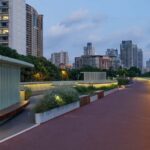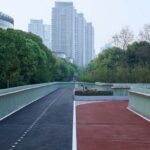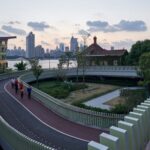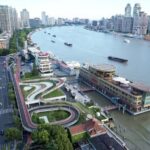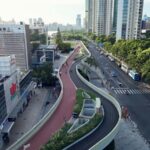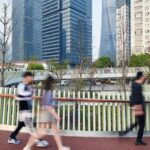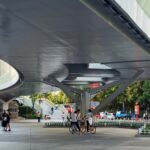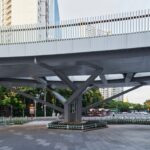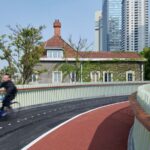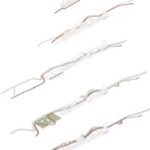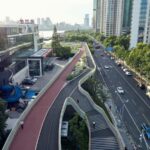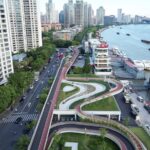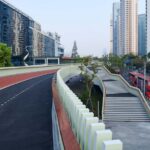Project Overview
The Dongchang Elevated Passage, designed by Atelier Z+, serves as a crucial link in the Project on Public Space Connection of both Banks of the Huangpu River. As one of the twelve bridges spanning the main space breakpoints along the East Bank of the river, it exemplifies how infrastructure can reconcile diverse interests, enhance urban spaces, and maximize accessibility.
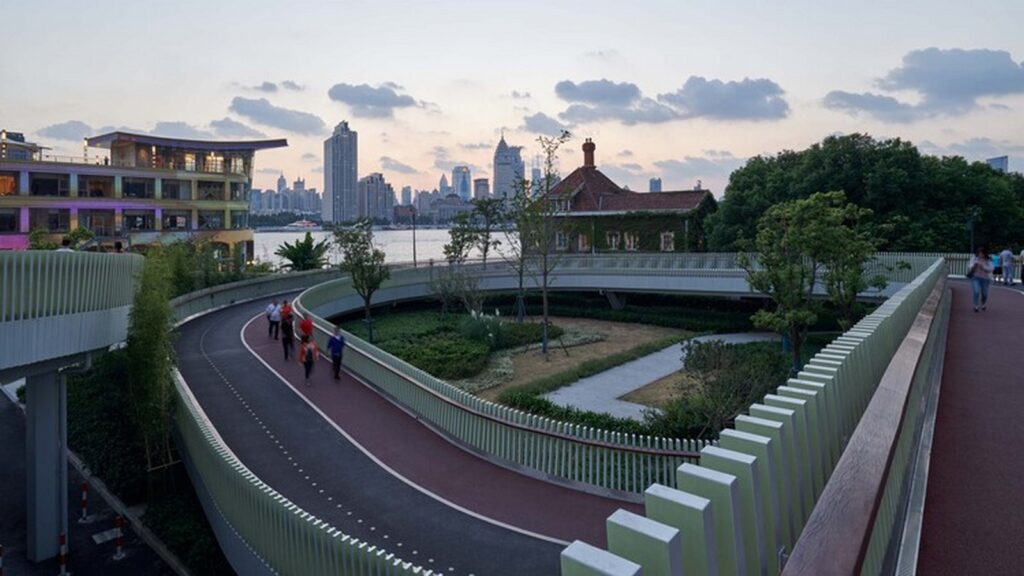
Context and Significance
Situated over the Dongchang Ferry Terminal and adjacent to the bustling Lujiazui CBD area, the passage addresses several urban challenges. It resolves traffic conflicts, integrates public spaces, and mitigates the impact of surrounding structures, fostering a more cohesive and vibrant urban environment.
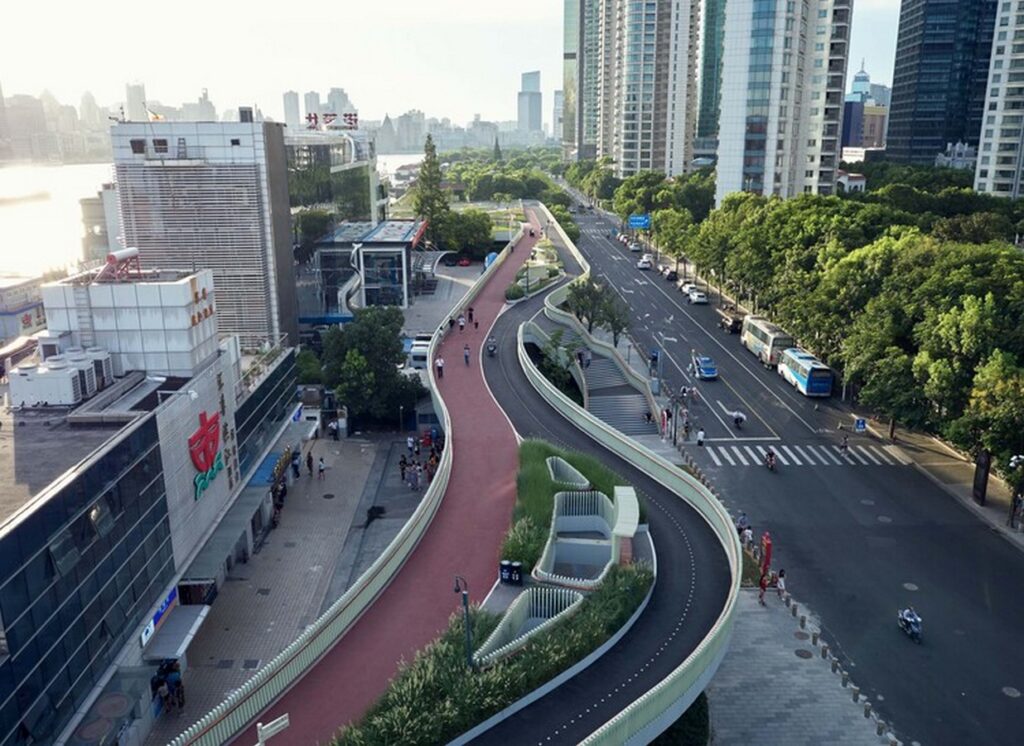
Design Features
Structural Innovation
The elevated passage employs a Y-shaped composite pier design to minimize land occupation and accommodate the complex underground infrastructure. Utilizing steel-box continuous girder bridges with large spans, the structure seamlessly navigates obstacles like the Renmin Road River-Crossing Tunnel and underground water source pipes.
Integrated Sections
The passage comprises five distinct sections, each thoughtfully designed to integrate with its surroundings. From south to north, these sections include approach bridges, a platform over the Ferry Terminal, a span over the Yacht Club, a greenbelt platform, and a north approach bridge.
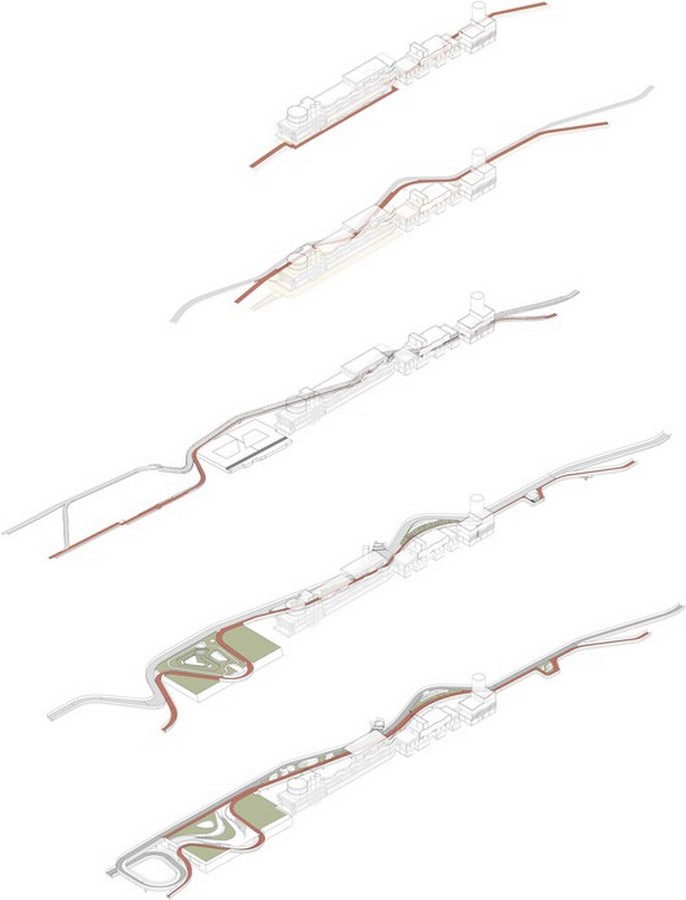
Urban Experience
Throughout the passage, attention is paid to the experiential aspect. Wide paths, seating areas, and scenic viewpoints invite pedestrians and cyclists to engage with the urban landscape. A spiral ring path offers panoramic views of the city skyline and the historic Bund area, enriching the overall experience.
Aesthetic Considerations
The design incorporates aluminum rectangular tubes for trestle slabs, ensuring both safety and permeability. Coated in silver-gray and light green, the tubes complement the passage’s modern aesthetic and blend harmoniously with the surrounding environment.
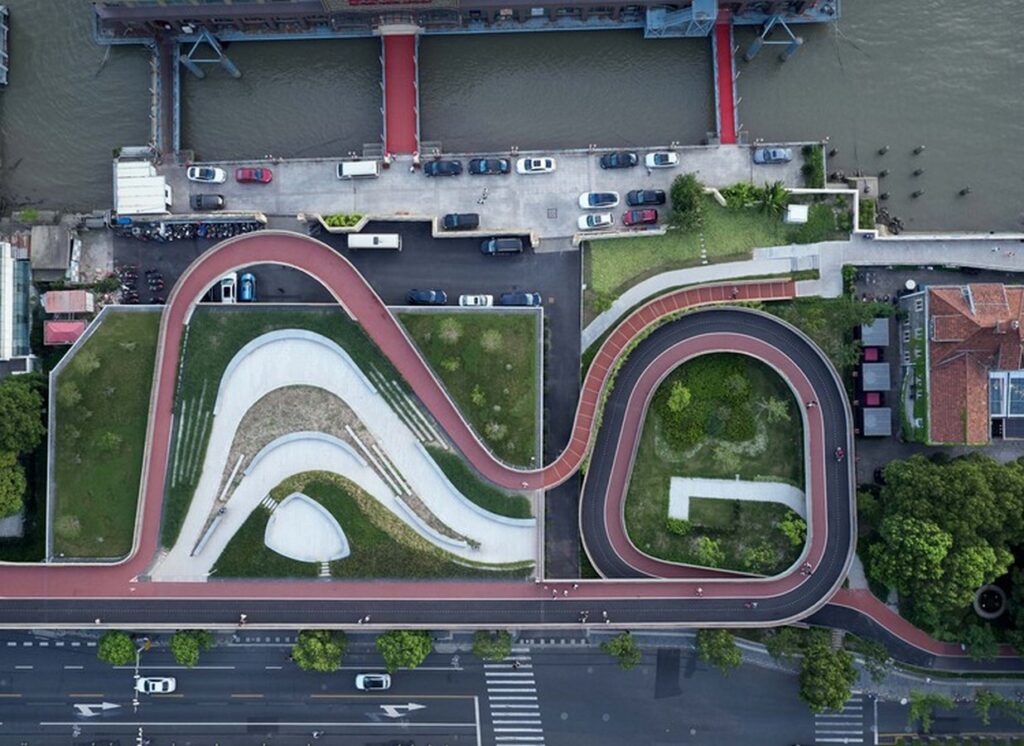
Conclusion
The Dongchang Elevated Passage represents a paradigm shift in urban infrastructure design. By seamlessly integrating with the urban fabric and prioritizing user experience, it not only enhances connectivity but also fosters a sense of community and inclusivity. As a testament to innovative design and collaborative planning, this passage sets a new standard for urban pedestrian infrastructure.



